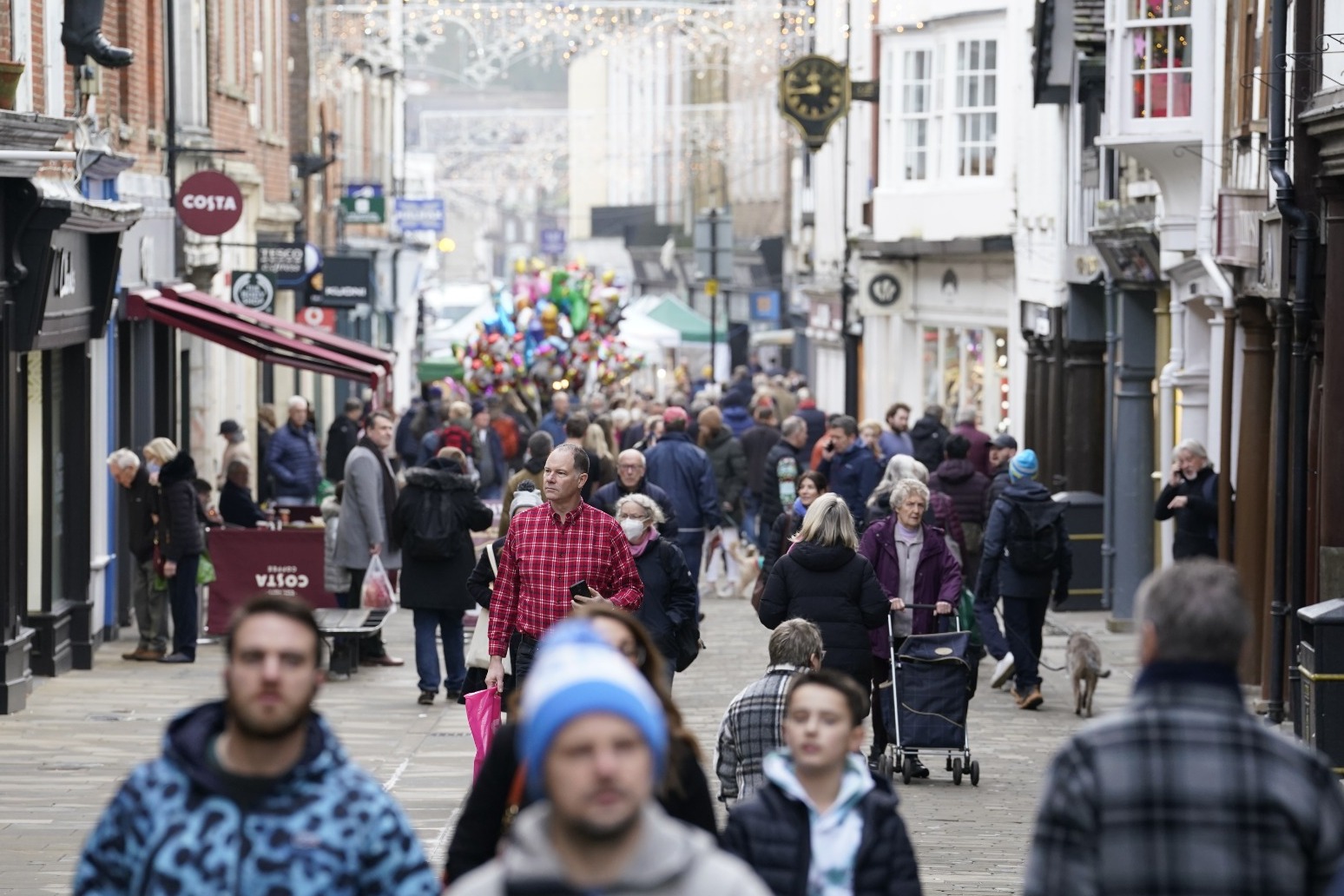
December shopper footfall reaches highest level since start of pandemic
Shopper footfall reached its highest level since the start of the pandemic in December to cap off an otherwise “exceptionally difficult” year for retailers and consumers.
Total UK footfall was down 7.3% in December on 2019 pre-pandemic levels, six percentage points better than November and better than the three-month average decline of 10.2%, according to British Retail Consortium (BRC)-Sensormatic IQ data.
Footfall on high streets was down 9.3% on December 2019 – 4.3 percentage points better than November’s rate, while shopping centre visits were 19.9% down on 2019 but an improvement on the three-month average decline of 20.9%.
Total UK footfall across 2022 remained 11.8% below pre-pandemic levels but this was a significant improvement on 2021’s 33.2% drop.
BRC chief executive Helen Dickinson said: “A combination of rail disruption and the cold snap kept many shoppers from visiting town centres and high streets in the last week before Christmas. Meanwhile, the postal strikes forced others to head in for the last week to secure last-minute gifts in-store.
“Historically low consumer confidence and 30-year-high inflation made for an exceptionally difficult year for consumers and retailers, with footfall down over 10% on pre-pandemic levels.
“Nonetheless, this was still a significant improvement on the previous two years when the pandemic kept many people at home.”
Andy Sumpter, from Sensormatic Solutions, said: “Retailers rose above an onslaught of festive disruption, from snow chaos to rail and mail strikes impacting consumers’ shopping journeys both on and off-line, disrupting pre-Christmas travel to shopping hubs and creating online delivery backlogs and delays.
“Looking ahead to 2023, retailers will be hoping for more stability and support to help them chart a trading course for success in the light of continued economic headwinds, as they adapt their retail offers to the needs of the cost-of-living consumer.”
Retailers enjoyed better-than-expected trading in discretionary categories in the run-up to Christmas, however, there are concerns that the heavy discounting required to generate these results will impact retailers’ profitability.
Meanwhile, separate figures from accountancy and business advisory firm BDO show total like-for-like retail sales were up 9.8% in December on the year before.
The fashion sector drove growth with total sales up 16%, while the final week of December saw sales up 26.4%.
Sophie Michael, head of retail and wholesale at BDO, said: “Although we have seen positive retail sales figures in December, these figures are still running significantly below inflation, which means sales volumes must still be down.
“It is clear that the cost-of-living crisis continues to weigh heavily on the appetite for non-essential spending.
“Food inflation rose to 13.3% in December, higher than CPI, and the higher costs of food will only put further pressure on consumer discretionary spending. These factors and the wider economic landscape are contributing to a gloomy start to the year for retailers, despite the better-than-expected December trading results.”
Published: by Radio NewsHub